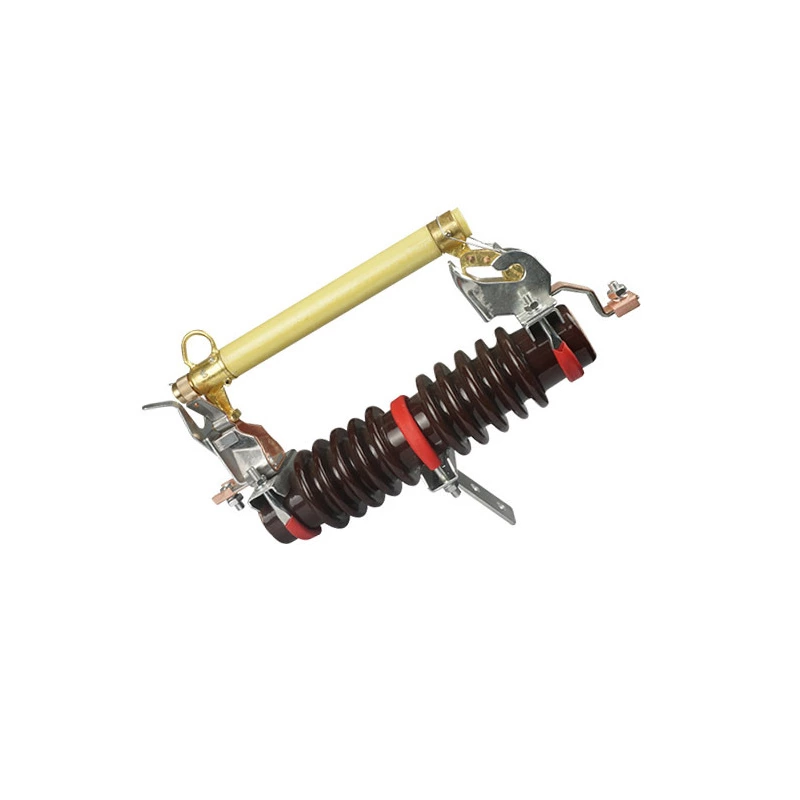Analysis On The Necessity And Technical Specifications Of Grounding Of Drop-out Fuse
1. Basic requirements for equipment grounding
High Voltage Fuse is an important protection device in the 10-35kV distribution system. Its grounding requirements should meet the relevant provisions of GB 50169 "Construction and Acceptance Specifications for Grounding Devices of Electrical Installation Engineering" and DL/T 5220 "Technical Specifications for Design of 10kV and Below Overhead Distribution Lines". Although the equipment body adopts a fully insulated design, conductive parts such as metal mounting brackets and operating mechanisms still need to be reliably grounded, and the grounding resistance value should be controlled within 10Ω (in areas where the soil resistivity does not exceed 100Ω·m).
2. Technical necessity of grounding
Insulation coordination requirements: When the melting tube is burned or the surface is dirty, the grounding system can limit the leakage current to a safe range of 50mA to prevent insulator surface flashover.
Operation safety protection: The induced potential generated by the opening and closing operation is released through the grounding system to ensure that the operator's contact voltage is less than 36V (dry environment).
Fault current diversion: In the event of a single-phase grounding fault, the grounding wire can divert 60%-80% of the capacitive current and suppress arc grounding overvoltage.
... The copper grounding terminal is embedded in the insulating base of the fuse and connected to the grounding grid through a 16 square millimeter copper stranded wire.
The supporting frame is constructed of 40×4mm hot-dip galvanized flat steel to form a ring grounding body.
The operating mechanism shaft is equipped with a discharge gap (0.5-1mm) to achieve dynamic grounding protection
Differences in installation scenarios:
Installation in the middle of the line: The supporting cross arm is electrically connected to the main reinforcement of the tower to form a natural grounding
Transformer stand installation: It is necessary to maintain an electrical distance of ≥3m from the neutral point grounding system of the transformer
User incoming line installation: The repeated grounding system and the user ground grid are set independently
... High resistivity areas: Use graphite grounding modules (size 500×400×60mm) with resistance reducing agents to stabilize the grounding resistance below 15Ω
Lightning-prone areas: Install arc-starting rods 1.5m on both sides of the fuse to shift the lightning discharge channel to a dedicated grounding electrode
Coastal corrosive environment: The grounding conductor is made of copper-clad steel composite material (copper layer thickness ≥ 0.25mm), and HS201 conductive anti-corrosion paste is applied to the joints.
... Place the horizontal radiating pole
VI. Inspection and maintenance standards
... VII. Technological development trends
The new non-contact grounding monitoring device has achieved real-time measurement of grounding resistance (with an accuracy of ±0.5Ω) and connected the grounding status data to the distribution automation system through wireless transmission. After using composite insulation materials (such as silicone rubber-zinc oxide composite materials), the service life of the grounding system has been extended from 15 years to 25 years.
8. Conclusion
The scientific grounding of drop-out fuses is an important part of ensuring the safe operation of the distribution network, and the design principle of "body isolation and architecture conduction" must be strictly followed. With the popularization of intelligent grounding monitoring technology, a three-in-one safety protection system of "equipment body-grounding network-monitoring terminal" will be formed in the future, which will significantly improve the protection against electric shock and lightning strikes. Therefore, Enbima has established a full life cycle management file for the grounding system to ensure that the grounding device is always in a reliable working state.

